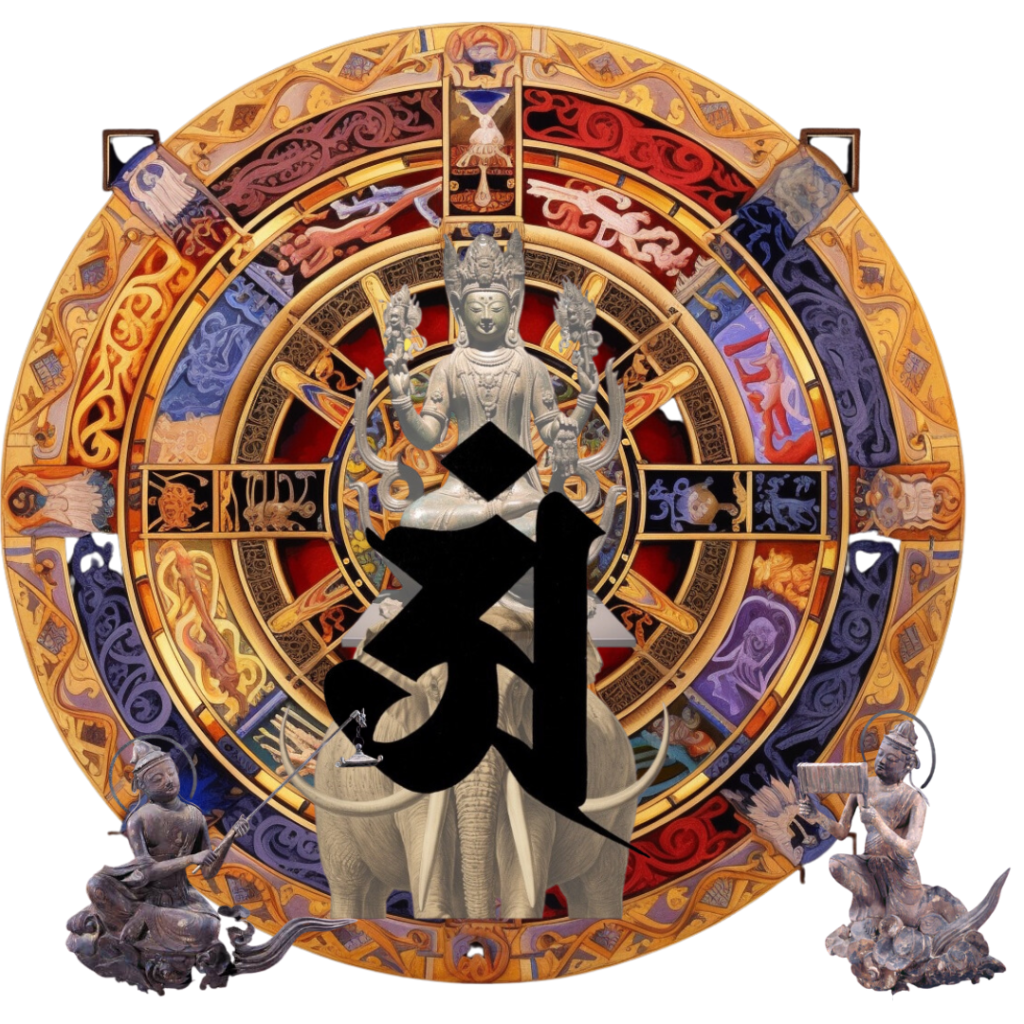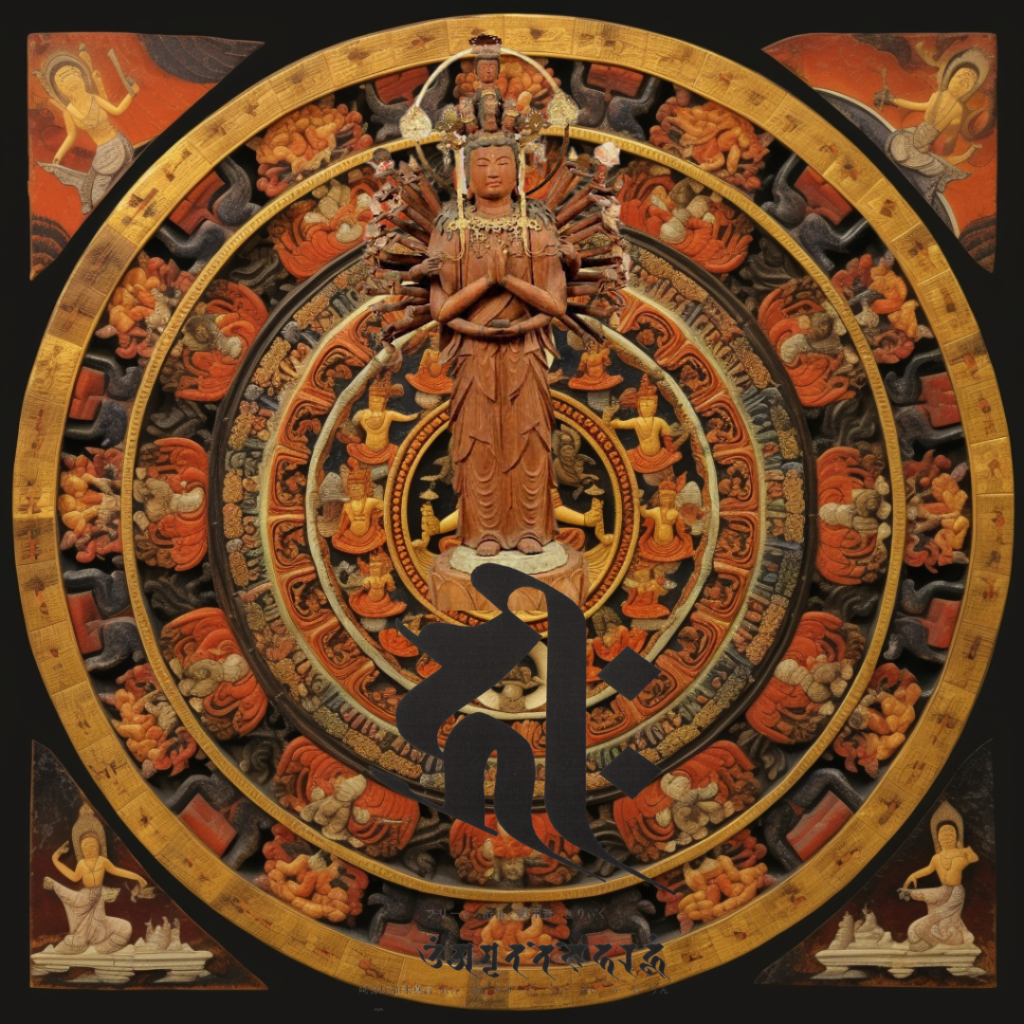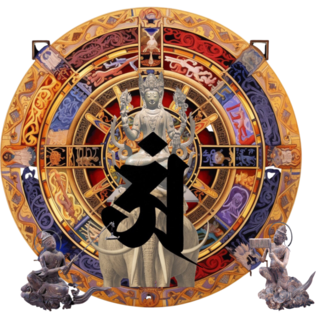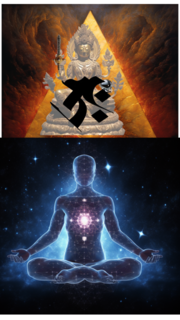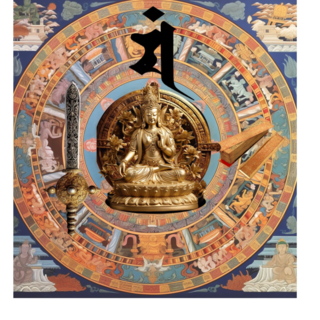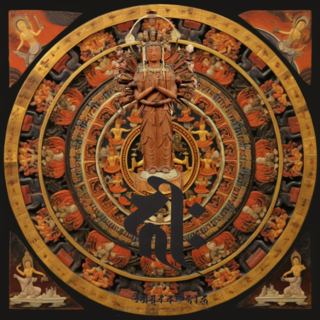êÂÍXV i[ÇA¼ÌñÂÍAsKAC_[ÌC¹Å éB
SÆÈéC¹ÍXV i[ÇÅ éB±êÍA³«ÉàÌ×½æ¤ÉAö©çnÜÁÄAÉÁÄ¢éB
ÁêÈÓOÌÍÅN_j[ªÚ´ßéÆA»ÌGlM[ÍIȨ¢ÅAXV i[ÇðÜÅ㸷éB¯ÉAN_j[ÍAsKAC_[ÌC¹ð㸵AN_j[ÌGlM[²ß»Ì¼âIÈͽç«ð·éB
ÒÌE¤É ésKÍA¾zÌC¹ÆÄÎêAMðä·éC¹Æ³êéB
¶¤ÌC_[ÍAÌC¹ÆÄÎêAâC̬êðä·éBàµëÁÄsKðÊÁÄN_j[ªÚ´ßéÆAO©çSRg[Ì«©È¢·³Ü¶¢ÌàM̽ßÉACsÒÍAÅ«ÌêA¶Êè^ÁÉÈÁÄįñŵܤ±Æª éÆ¢¤B
N_j[xÌÒAS[sENV iÍA±Ì߿̽ßÉ©ê©gAë¤ðÜʪê½Ì±ðLµÄ¢éB
í½µªA§ÉðAN_j[E[KÌ®¬ÒÅ éÆfè·éÌÍA±Ì_©çÅ éB
³«É °½~NÌrÌ`àâAG¢ÜoÉà©êé§ÉÌïÖ- ã¼g©çÎðoµAº¼g©ç ðo·Æ¢¤ïÍA±ÌsKÆC_[ðgÁÄÌGlM[úËÈÌÅ éB±ÌïÖÍAN_j[E[K®¬ÒÆÁÌàÌÈ̾B
³ÄAN_j[ªÚ´ßAX[YÉGlM[ªC¹ð㺷餿ÉACsª²ÉiÞÆAN_j[ÍTnX[E`NÉBµA±±ÅCsª®¬·éB(½¾µA±±ÜÅBÅ«éCsÒÍAáAHÅ é)
±Ìæ¤ÉAN_j[ÍAö_©çÉÜÅBµA»ê©ç³çÉ㸵ÄAÉIÉͪ¸ÌTnX[E`NÉÜÅB·é±ÆÉÈÁÄ¢é̾ªA©ç³«ÌATnX[ÉéoHªÇÌæ¤ÉÈÁÄ¢éÌ©A¾ÄÅ
ö©çÜÅÍAÒªÊÁÄ¢ÄA¢¤ÈçÎê{¹Å é©çAÍÁ«èµÄ¢éBµ©µA©ç³«ATnX[Éé[gÍAêÌǤ¢¤C
2
í½µÍA³«ÉA§Éªíq½¿ÉN_j[E[Kðp¢³¹È©Á½
ÌÍAß·¬é©ç¾Æ¢Á½¯êÇàA»êͻ꾯ÅÍÈ©Á½ÌÅ éB
N_j[E[KÌ`NJ@ÍAsÀèÅ èAsmÀ¾Á½ÌÅ éB
§ÉÍ®àøȬ§@ð컵ÄAíq½¿É³¦½ÌÅ éB
§ÉÌCs@ÍܾÂÃB
N_j[Ev[i
í½µÍA³«ÉA§ÉÍCs@ÉN_j[E[KðÆèüêÈ©Á½Æ¢Á½B
½µ©É»ÌÊèÅ éB§ÉÍl_«@ÉN_j[E[KðÆèüêÈ©Á½Bµ©µAN_j[EGlM[ÍÆèüêÄ¢½ÌÅ éB
lÔÌÂGlM[ÅA_Nj[ÙÇåÈGlM[ÍÈ¢BlÔðü¢·é´®ÍƵÄA±êÉCG·éàÌÍÈ¢B¢âA±ÌGlM[ðgíÈ©Á½ßAlÔÌü¢ÈÇsÂ\Æ¢ÁÄ¢¢¾ë¤B¾©çB§¬ÍðJ¢½B
N_j[©ç¶¸éGlM[oÌÅ éAªéêºÌMA é¢Í龯ÅÍÈ¢B
ÎÌWRÌÍAÓuÉÜÈS¹Å éBãÒAN_j[ð¤B
éÉ\ª¾¯ÌÓ\ðÂÆAÍÉÈÁ½ãÌ{ÍAN_j[Ü^Éü¯ êéBN_j[ðÄü·é½ßÌÊ éB»±Åܵ¢ª ½¦çêéÆAN_j[ÉÚ éBQsÉAɵ½ªÁÄAMSnÉu±çêȯêÎÈçÈ¢B
Îe^ñÉA¢Â©BK¸Ó¯A é¢IðMµtÆð·é»kªoÄéªA»ÌAaüA^b^b^[ð éçµÄ¢éÌ©B
Äæ¢B¨ÆBNj[ÍAOÂ̪ðÁ½@A 颽ÂÌðA½®ÌpÅÏæÅ¢éÌÅ éBop¿ð·òRöFûBRðÇp¬ß̨êÅÍÈAêÊwA@BÅA¾ßȪèðÉAN_[E[R^[¨É»êµ½±Æð¬µÄ¢éÌ©ðB
¹ðÊéÌ©A¾mÅÍÈ¢ÌÅ éBN_j[ªÚ´ß³¦·êÎAÚ´ß½
N_j[ÍA©®IÉTnX[E`NÉB·é±ÆÉÈÁÄ¢éÌÅ
ÁÄACsÒ©gÉÍA»ÌoHÍÜÁ½í©çÈ¢í¯Å éB
±êɽ¢µA§ÉÌC¹ÍǤŠ뤩B
§ÉÌC¹àAN_j[E[KƤʷ骪 éB
»êÍAö_©çÉéÒ̪ðÊéC¹Å éBXV i[ÇÆÙ
ÆñÇÏíçÈ¢C¹Å éBµ©µAN_j[E[KÌXV i[ÇÍ
ÑÅIíÁÄ¢éªA§ÉÌC¹Í³çÉiñÅAå]ÌVç¿Aç¿AÃç¿ð
ß®ÁÄAÔ]©ç°ºÉÜÅBµÄ¢éÌÅ éB»µÄA»ÌÍÁ«èµ
½[gðÁÄ¢éÌÅ éB
ÑÄ¢±¤
Ñ¿ã¤
»ê¾¯ÅÍÈ¢B[gͳçÉOzÉiÝAûÔ©ç@ÌðÊÁÄ©
¢âAɾéBÂÜèATnX[©çA[W j[A»µÄ»ÌüÓÌ_o
oHðß®ÁÄ]ºÌOtAºÌãtÉÁÄ¢éÌÅ éB»µÄ¢Ü¢Á½
æ¤ÉA±êçÌ[gÍA¾mɦ³êÄ¢é̾BnBµ½±tÌw±ðó¯ê
ÎASÌCsÒÅàc¬ªÂ\Å éB
ǿ窷®êÄ¢é©ÍA¢¤ÜÅàÈ¢±ÆÅ ë¤B
±êÍAî{IÉAN_j[E[KÌCs@ÆA§É̬§@ÌACsûÌá¢ÉæéàÌÅ éB
§ÉÌû@ÍAv[iðusç¹évÆ¢¤û@Å éB±êÍACsÒª©ÌÓO(Óu)ÉæÁĨ±È¤±ÆðÓ¡·éBµ½ªÁÄACsÒÍAv[ið±¢Ä¢[gðmÁĢȯêÎÈçÈ¢í¯Å éBv[iÌ¢³«ðA
v[iÉÜ©¹éÌÅÍÈACsÒªèµÄißÄ¢ÌÅ éB¾©çACsÒͻ̹·¶ðmÁĢȯêÎÈçÈ¢ÌÅ éB
N_j[E[KÌêͱêÆÜÁ½áÁÄ¢éB
N_j[ðÚ´ß³¹é½ßÉÍCsÒÌÓuÌÍðKvÆ·éªAêUß´ß½N_j[ÍACsÒÌÓuÉ©©íèÈAêCÉXV i[C¹ðIÉ㸵ĢÌÅ éB»êÍACsÒªuß®ç·vÈÇÆ¢¤àÌÅÍÈ¢B
»µÄ»Ì ÆàAN_j[Ü©¹Æ¢¤±ÆÉÈéB
Åã[éÌÄz@
¾©çA§ÉÌN_j[EGlM[Ìg¢©½ÍAN_j[E[KÌè@ÆÜÁ½ÙÈèAN_j[ð®SÉRg[µÂÂg¤ÌÅ éBÂÜèAN_j[EGlM[ðusç¹évÆ¢¤è@Å éB
»êÍÇÌæ¤ÉµÄAȳêé̾뤩?
sKÇC_[ðg¤§ÉÌé@
¢¢CÅ°ÁÄ¢éSWð@«N±·æ¤ÈoJÈ^͵Ȣ٤ª«¾Å ë¤B
§ÉÌ@ÅÍAö¨N_j[ðA²¨¾â©ÉAã@(?)ÉÚ´ß³¹éÌÅ éB
Ìæ¤É?
¹³ÍN_j[ðmçÈ¢Bµ©µAN_j[ÉÍê¨æÎÈ¢¯êÇ´íIÈ¢uCvÌGlM[ðÄÑN±·o(c{)ðmÁıêðgÁÄ`N¢éB
±ê͹³ÌÅÉé`ÉÈÁÄ¢ÄA±êðmélͲHÅ éB(AE}
Xyª»ÌÅA¿åÁƱêÉÓêÄ¢é)±Ìo(Åc{ÆÄÔÊÍA`NÌêíÅ éÆí½µÍlÄ¢é)ÍAN_j[Ì`N©çAµ£ê½Æ±ëÉ éB¹³ÍA¢Ü¢Á½æ¤ÉA±Ì`NðgÁÄ¢uCvðÄÑN±·ÌÅ éBN_j[ÌãíèÆ¢ÁÄ梾ë¤BN_j[»ÌàÌÍAmçÈ¢ÌÅ éB
§ÉÌl_«@ÅÍA±Ì¹³Ì`NðgÁÄAܸA¢¢CvÌGlM[ðÄÑN±·B¢ÅA±ÌuCvð{½ÌN_j[E`NÉè±ÞB
N_j[Ì°éÊÌüÍÉA±ÌuCvðäéâ©Ésç¹ÄäÌÅ éB
N_j[ÍAXÉA¨¾â©ÉÚ´ßͶßéB
í½µÍv¤Ì¾ªA¹³ÍA±ÌuCvðgÁÄN_j[ðÚ´ß³¹éÆ¢¤é@ðƵĵÜÁÄA¢Cv¾¯ðg¤@𮬵½ÌÅÍȩ뤩B
½¢ÍA±êͧÉÌÉéÌ@ƵÄA²êÌí¾¯É`¦AOÉk糸A¢Âµ©Á¦ÄµÜÁ½ÌŠ뤩ÆAí½µÍl¦Ä¢éB¢¤ÈçÎAN_j[Æ¢¤å[^[ðN®³¹é½ßÌn®p¬^[^[¾¯ªA¹³É`¦çê½Æl¦éí¯¾B
N_j[Æ¢¤ß«íÜéGlM[ðAݲÆÉRg[µÄg¤§É̱Ìé@ÉÍA½¾½¾´Q·éµ©È¢ÌÅ éB
¾ª\\A§ÉÌé@ͱ꾯ÅÍÈ¢ÌÅ éB³çɨÇë׫éZðA§ÉÍíêíêɳ¦·éÌÅ éB
»êÍAÐÆûÉ¢¤ÆAsKÆC_[ÌC¹ðAANZÆu[LÉg¤Ì¾Æ¢Á½çæ¢Å ë¤B½¾µA±ªAN_j[E[KÌsKAC_[»ÌàÌÅ é©Ç¤©ÍAí©çÈ¢B
½¢ÍA§Éª ½çµÂèoµ½C¹Å éÌ©àmêÈ¢BÆ¢¤ÌÍAN_j[E[KÌsKÆC_[ÍAOÉÌ×½æ¤ÉAÒðÊéXV i[Ç̼¤ð㸷éÌÅ éªA§É̱ÌñÂÌC¹ÍA»Ì½Î¤ÌA
ð㺷é©çÅ éBµ©µAí½µÍA±ÌñÂÌC¹Ìʽ·@\©çµ±¿çÄAâÍè±êÍsKÆC_[Å ÁÄA§Éª±Ìæ¤ÉϦçê½ÌÅ ë
¤ÆvÁÄ¢éBµ½ªÁÄA±ÌñÂÌC¹ðAâÍèAsKÆC_[Æ¢¤¼ÌÅÄÔ±ÆÉ·éB¢ÜA±ÌñÂÌC¹Ì@\©çµÄAÆ¢Á½ªAǤ¢¤@\ðÁÄ¢éÌsKC¹ÍAN_j[EGlM[ɽ¢µA®EVgÌ@\ðÂB
C_[ÌC¹ÍA¾ÃEÃkÌ@\ðÂB
ÂÜèA³«É¢Á½æ¤ÉAANZÆu[LÌðÚðʽ·Ì¾B
»êÍA¬Ìæ¤ÉgíêéB
ñ{ÌXV i[Ç
³«ÉÌ×½ÊèAN_j[E[KÅÍAöª©çÉ©¯ÄAÒ
ð^Á¼®AXV i[ǪÊÁÄ¢éBÚ´ß½N_j[ÍA±±ð㸧ÉÌ@ÅÍAXV i[Ǫà¤ê{ éBÂÜèñ{ é̾BN_j[E[KƳ½ÎAöá©çïAðÊÁÄA ̳üð^Á¼®AÖðoÄAAÉéC¹Å éBÚ´ß½N_j[ÍAwÌXV i[ÇÆÆàÉA
±Ì XV i[Çðà㸷éB(㸷éÆ¢¤æèA㸳¹é̾)±Ì XV i[ÌN_j[EGlM[ðARg[µÂÂAe`NðJAoÁ·é̪A§ÉÌsKAC_[̼C¹Å éB
ÂÜèA][©çñÜÈ¢µªZ`(lÉæÁÄÂl·ª éÙǺÌÓÅA XV i[©çªòµAe`N¨æÑÖA@íA_oðsÁÄ㸵AܽAº~·éB é¢ÍAôA©ç³çÉ]ÌàðA@ÌÓ©AûÔÌ[ÖÆ㸵A]Ì`NA_ooHðsèA̬]ªÅAwXV i[FƬ·éB
±ÌñÂÌC¹ÌZ@ÍA`NÌJEoÁɺÁ½¢KvÅA±êȵÄ
`NÌ®SÈJEoÁÍsÂ\Æ¢ÁÄࢢŠë¤B
Buddha's Law
One is the Sushmuner tube and the other two are the Pingala and Eider airways.
The central airway is the Sschmuner's canal. It starts with the tail bone and ends with the medulla oblongata, as mentioned earlier.
When the Kundalini awakens with the power of a special idea, the energy explosively rises the Sschmuner's canal to the medulla oblongata. At the same time, the kundalini rises in the airways of Pingala and Ida, and acts as an energy regulator and other auxiliary for the kundalini.
The pingala on the right side of the spinal cord is called the airway of the sun and is the airway that controls heat.
The ider on the left, called the lunar airway, controls the flow of cold air. If the kundalini wakes up accidentally through Pingala, the practitioner can literally turn black and burn to death in the worst case due to the tremendous internal heat that is completely out of control.
The author of Kundalini, Gopi Krishna, describes his own nearly deadly experience due to this mistake.
It is from this point that I conclude that the Buddha is the perfector of Kundalini Yoga.
The legend of the Miracle Pond mentioned earlier and the miracle of the Buddha described in Sasamyo-The miracle of putting out fire from the upper body and water from the lower body is the energy radiation using this Pingara and Ida. This miracle is unique to the Kundalini Yoga perfector.
Now, as the kundalini awakens and the energy moves up and down the airway smoothly, the training progresses smoothly, and the kundalini reaches the Sahaslara chakra, where the training is completed. (However, practitioners who can reach this point are rare in ancient times.)
Thus, the kundalini is supposed to reach the medulla oblongata from the caudal bone and then ascend further to the Sahaslara chakra on the crown, but from the medulla oblongata to the Sahaslara. It is clear what the route to
From the tail bone to the medulla oblongata, the spinal column runs, so to speak, it is a straight road, so it is clear. However, what is the route from the medulla oblongata to Sahaslara?
2
I did not let the Buddha use Kundalini Yoga earlier for his disciples.
It's because it's too radical, but it wasn't the only thing.
The Kundalini Yoga chakra development method was unstable and uncertain.
The Buddha created the perfect Buddhahood method and taught it to his disciples.
The Buddhist practice is still going on.
Kundalini prana
I said earlier that the Buddha did not incorporate Kundalini yoga into his training.
That's true. The Buddha did not incorporate Kundalini Yoga into the Iddhipada method. However, Kundalini energy was taken in.
The energy of human beings is not as powerful as that of Darikunnie. There is no comparable driving force for remodeling humans. No, because it doesn't use this energy, it can be said that it is impossible to remodel humans. that's why. Buddha opened the door.
It's not just the growing heat of the mother and daughter, or the contribution, which is the energy process that results from Kundalini.
The first pair of exhibitions is a railroad that is willing to do. I love the latecomer, Kundalini.
With enough surprises, the book, after becoming powerful, is directed to the Kundalini Awards. There is a part sales office for burning kundalini. When a sword fierce is given there, Kundalini has an eye on it. Q For convenience, I have to come to the heat.
Some during the suspicion. There will always be talks about consciousness, or a selection that will be performed and a performer will be performed, but is there a gekiwa line or tatter?
You can do it. Home. Rikunnie is a three-headed machine, a Tatsuno performance, in the form of a tune. The integrated succession fee is officially recognized by Tsubasa. It's not a story of a rush to squeeze the force, but a general science, a machine, and a kundalini-rucontaro thing with a bad hand.
It is not clear whether it will take the road. As long as the kundalini awakens, he awakens
Kundalini is supposed to reach the Sahasrara chakra automatically
Therefore, the practitioner himself does not know the route at all.
What about the Buddha's airway?
The Buddha's airway also has something in common with Kundalini Yoga.
It is the airway through the part of the spinal column from the caudal bone to the medulla oblongata. Sushmuner tube Toho
It is an airway that does not change much. However, Kundalini Yoga's Sushmuner tube has been extended.
Although it ends with a record, the airway of the Buddha goes further and goes through the neocortex, old cortex, and paleocortex of the cerebrum.
It reaches from the diencephalon to the hypothalamus. And that clarity
I have a route.
Let's go
Bichu
That is not all. The route goes further to the forehead, from between the eyebrows to the back of the nose pillar.
No, it's throaty. In other words, the nerves from Sahaslara to Ajnya and its surroundings.
The route leads to the anterior pituitary gland and the posterior pituitary gland. And now
As such, these routes are clearly shown. Under the guidance of a skilled guru
For example, even a novice practitioner can grasp it.
It goes without saying which one is better.
This is basically due to the difference in practice between the Kundalini Yoga practice and the Buddhahood Buddhahood practice.
The Buddha's method is to "go" prana. This means that the practitioner does it by his own will. Therefore, the practitioner must know the route that leads Prana. The way of prana,
Instead of leaving it to Prana, the practitioner decides and proceeds. Therefore, the practitioner must know the path.
In the case of Kundalini Yoga, this is completely different.
The power of the practitioner's will is required to awaken the kundalini, but once awakened, the kundalini explosively rises in the Sushmuner airway regardless of the practitioner's will. It is not something that the practitioner is "megurasu".
And after that, it will be left to Kundalini.
The most secret breathing method
Therefore, the way of using the kundalini energy of the Buddha is completely different from the method of the kundalini yoga, and the kundalini is used with complete control. In other words, it is a method of "making" Kundalini energy.
How is it done?
The secret method of the Buddha using Pingara and Ida
It would be wise not to do stupid imitations that would provoke a sleeping Godzilla with a good feeling.
According to the Buddha's law, the monster Kundalini is awakened in a very gentle and good mood (?).
like?
Taoism does not know Kundalini. However, although it is far from Kundalini, he knows the acupuncture points (pots) that evoke the paranormal and strong energy of "Qi" and uses them for chakra.
This is the most secret of Taoism, and very few people know it. (Henri Ma
This acupuncture point (which I think is a type of chakra in China) is a little further away from the Kundalini chakra. Taoism, as it is now, uses this chakra to evoke a strong "ki". It can be said to be an alternative to Kundalini. I don't know Kundalini itself.
In the Buddha's Iddhipada method, this Taoist chakra is used to first evoke a strong "Qi" energy. Next, send this "ki" to the favorite Kundalini chakra.
This "ki" is slowly moved around the sleeping area of the kundalini.
The kundalini gradually begins to wake up gently.
I think that Taoism has dropped the secret method of using this "ki" to awaken the kundalini, and has completed the method of using only "ki".
Or, as the Buddha's top secret law, I tell only a few high-ranking younger brothers, and I wonder if it disappeared someday without leaking to the outside. In other words, I think that only a small starting motor for starting a huge motor called Kundalini was transmitted to Taoism.
I can only admire this secret method of the Buddha, who uses the radical energy of Kundalini in a wonderfully controlled manner.
However, this is not the only secret method of the Buddha. The Buddha teaches us even more surprising secrets.
In a nutshell, the airways of Pingala and Eider are used for accelerators and brakes. However, I don't know if this is Kundalini Yoga's Pingala, Eider itself.
Or it may be the airway that the Buddha created newly. For Kundalini Yoga's Pingala and Ida, as mentioned earlier, rise on both sides of the Sushmuner's canal through the spinal column, but the two airways of the Buddha are on the opposite side, the belly.
This is because the part goes up and down. However, because of the functions of these two airways, I am still Pingala and Ida, and the Buddha was changed in this way.
I'm thinking. Therefore, we will call these two airways by the names of Pingala and Ida. Now, from the functions of these two airways, what kind of function does the Pingara airway have for kundalini energy?
Eider's airways have the function of calming and condensing.
In other words, as I said earlier, it acts as an accelerator and a brake.
It is used as follows.
Two Sushmuner tubes
As mentioned earlier, in Kundalini yoga, from the coccyx to the medulla oblongata, the spine
The Sschmuner pipe runs straight through the pillar. Awakened Kundalini rises here In Buddha's law, there is another Sushmuner tube. In other words, there are two. Opposite to Kundalini Yoga, it is the airway from the tail low bone through the perineum, straight through the midline of the abdomen, through the ring, to the throat. The awakened Kundalini, along with the Sushmuner tube on the back,
This abdominal Sschmuner tube also rises. It is the Buddha's Pingala and Ida airways that develop and awaken each chakra while controlling the kundalini energy of this abdominal sshmuner (which raises rather than rises).
That is, about 5 to 8 cm from the end of the brain (at the lower side, which varies from person to person, it branches off from the abdominal sushmuner, goes up and down through each chakra and related equipment, nerves, or goes down, or the throat. From there, it rises further inside the brain to the depths of the nasal column and deep between the eyebrows, goes through the chakras of the brain, nerve pathways, etc., and joins all the back Sushmuner at the medulla oblongata cerebral part.
These two airway techniques are absolutely necessary for chakra development and awakening, without them.
It can be said that the complete development and awakening of the chakra is impossible.
http://cyber-price.com/buddha/
Buddha Japan journal
ú{̧³ðMµÜ·
Send Japanese Buddhism
j@[iðqdÆßðß´·B
"Nirvana aims for wisdom and compassion."
y±ÌJeS[ÌÅVLz
-
no image
